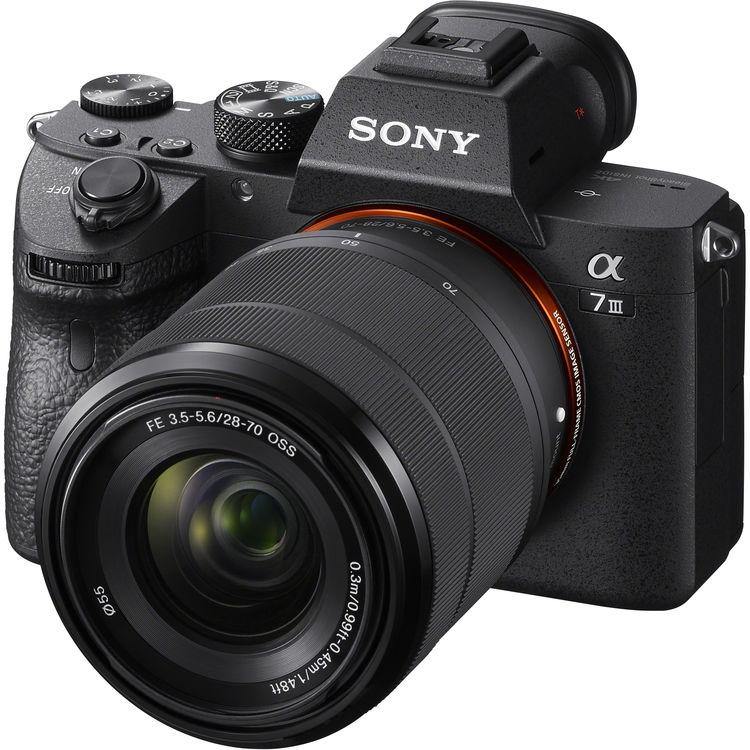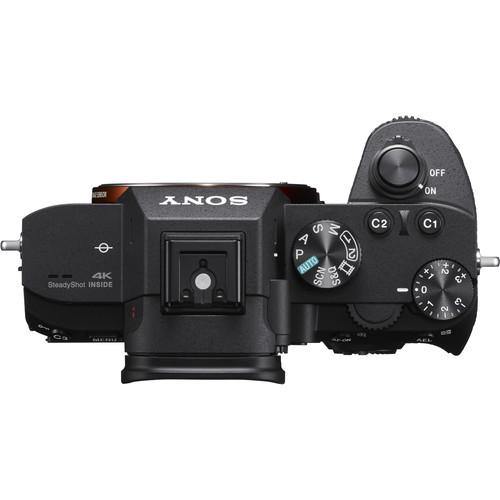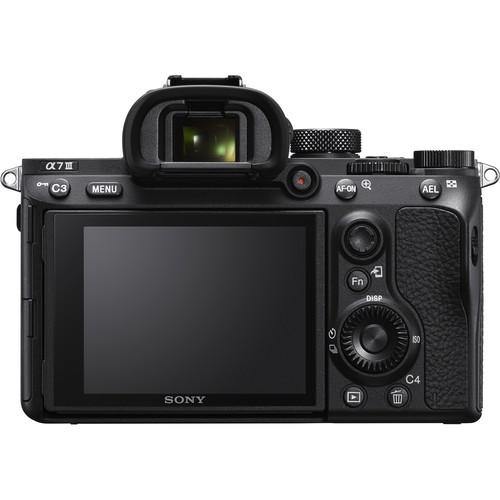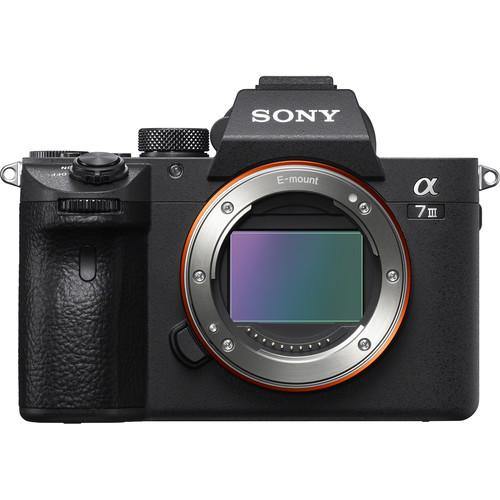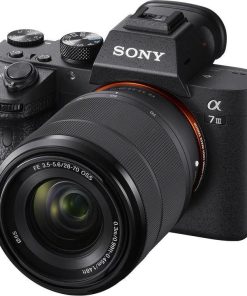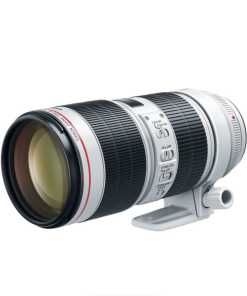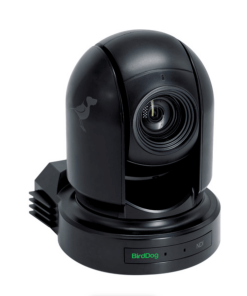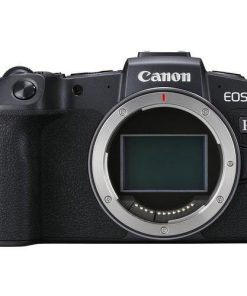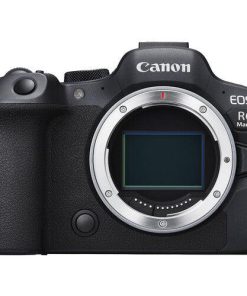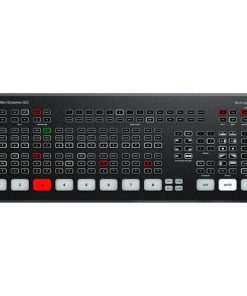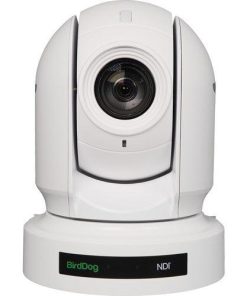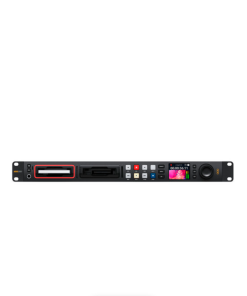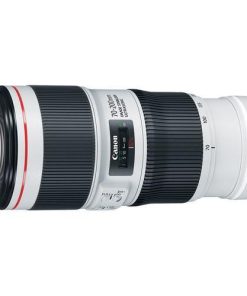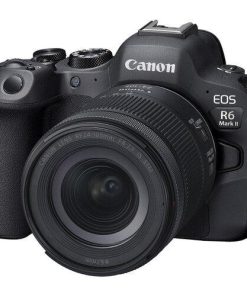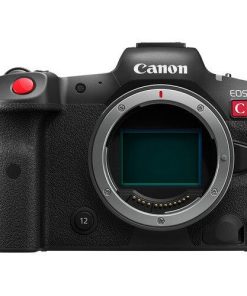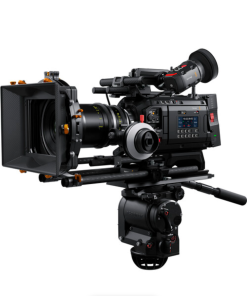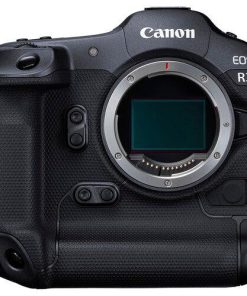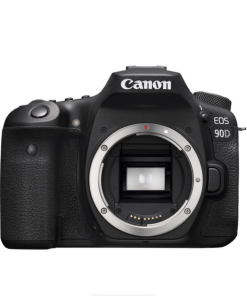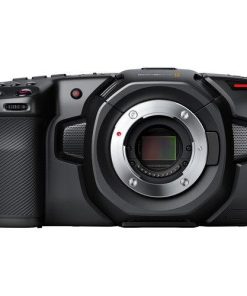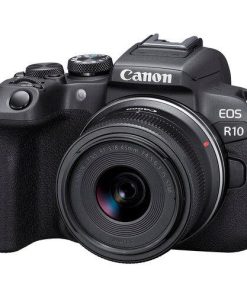Sony Alpha a7 III Mirrorless Digital Camera with 28-70mm Lens Sony
$ 1.698,00 $ 424,50
Distinguished by its updated sensor design, the Alpha a7 III Mirrorless Digital Camera from Sony is a well-rounded camera suitable for both photo and video applications in a variety of working situations. Refined for improved speed and low-light performance, the full-frame 24.2MP Exmor R BSI CMOS sensor and BIONZ X image processor pair to realize an impressive 10 fps continuous shooting rate and improved autofocus performance for faster, more reliable subject tracking along with wide frame coverage. This updated Fast Hybrid AF System employs a combination of 693 phase-detection points and 425 contrast-detection areas for quicker acquirement of focus in a variety of lighting conditions, and also maintains focus on subjects more effectively. In addition to speed and AF, the processing improvements also help to realize greater image clarity and reduced noise throughout the sensitivity range from ISO 100-51200, which can further be expanded to ISO 50-204800. Video recording capabilities have also been extended for enhanced quality when recording UHD 4K video with the full width of the full-frame sensor to minimize moiré and aliasing. Additionally, benefitting both stills and video operation, the a7 III utilizes a 5-axis SteadyShot INSIDE sensor-shift image stabilization, which is now effective to minimize the appearance of camera shake by up to 5 stops.
Beyond just updates to the imaging system, the a7 III’s body design has also been revised to include a rear 3.0″ 922k-dot touchscreen LCD, which has a tilting design to better support working from high and low angles. A 2.36m-dot Tru-Finder OLED EVF is also featured for bright and clear eye-level monitoring. For greater shooting flexibility, dual SD memory card slots are now featured, and a larger NP-FZ100 battery is also employed to achieve up to approximately 710 shots per charge. Suiting the camera’s use in trying conditions, the magnesium-alloy chassis and weather-sealing also render the a7 III dust- and moisture-resistant
- 24.2MP Exmor R BSI CMOS Sensor and BIONZ X Image Processor
- Featuring a back-illuminated design, the full-frame 24.2-megapixel Exmor R CMOS sensor works with the BIONZ X image processor to offer high-resolution stills and video while minimizing noise and improving speed. This sensor structure works with gapless on-chip lens design and an anti-reflection coating, as well as eliminating the optical low-pass filter, to improve light collection and enhance detail. Also, the copper wiring layer dramatically improves data transmission speed for creating 14-bit, high-resolution stills with a native sensitivity range from ISO 100-51200, which can be further expanded to ISO 50-204800. Also, it enables internal UHD 4K video recording with a wide dynamic range using the full width of the full-frame sensor. The BIONZ X processor also works in conjunction with a high-speed front-end LSI to realize faster processing times along with the ability to capture an impressive 15-stop dynamic range at low sensitivity values.
The sensor and processor combination also avails fast continuous shooting at up to 10 fps at full resolution, for up to 177 consecutive frames, and with full-time AF/AE when working with either a mechanical shutter or an electronic shutter. If shooting in live view mode, a continuous shooting rate of up to 8 fps is also possible.
- Fast Hybrid AF System
- An evolved 4D FOCUS system now employs a combination of 693 phase-detection points, which cover approximately 93% of the frame, along with 425 contrast-detection areas for reliable and quick autofocus and subject tracking performance. This Fast Hybrid AF System now achieves twice the focusing speed and more reliable tracking compared to previous a7 models, as well as improved low-light focusing. The use of phase-detection points also enables the use of A-mount lenses via the optional LA-EA3 or LA-EA1 lens mount adapters with full continuous AF/AE tracking compatibility.
The apt focus system also lends itself to a variety of focusing functions for refined accuracy, including Lock-on AF, which maintains focus on moving subjects throughout the use of a configurable frame that is set over the desired moving subject, and Expand Flexible Spot, which employs neighboring focus points to retain focus on moving subjects even if the originally selected point loses focus. Additionally, Eye AF can be used to base focus on recognized subjects’ eyes for portraits and is available in both AF-S and AF-C modes. Autofocus can also be used in conjunction with the Focus Magnifier function for critical focus when homing in on minute subject details. The rear touchscreen can also be used for Touch Focus control, and a Touchpad Focus Control mode lets you use the rear screen intuitively while keeping your eye to the viewfinder.
- 5-Axis SteadyShot INSIDE Image Stabilization
- Packed into the robust a7 III is a 5-stop effective 5-axis SteadyShot INSIDE image stabilization system that compensates for five different types of camera shake encountered during handheld shooting of stills and video. This allows users to confidently use any lens, even adapted lenses, for critical imaging without encountering blur from camera shake.
For long focal lengths, the system will correct for pitch and yaw adjustments. Macro and high-magnification imagery, on the other hand, will benefit from the inclusion of horizontal and vertical shift compensation. All shooting styles will get usage out of the roll compensation. All 5 axes of stabilization will function at all times, even when used with third-party lenses and adapters or lenses with built-in optical stabilization.
- UHD 4K Video Recording in XAVC S Format
- Internal recording of UHD 4K movies is possible in multiple frame rates up to 30 fps and using 2.4x oversampling renders greater detail and full pixel readout is possible, that is void of pixel binning, for higher quality imagery with reduced moiré and aliasing. Full-frame 4K recording has also been dramatically improved for improved quality when working at mid to high sensitivities to permit full use of the entire sensor width. Full HD 1080p recording is also supported in frame rates up to 120 fps, and both resolutions utilize the 100 Mb/s XAVC S format contained within an MP4 wrapper with 4:2:0 sampling. The high-speed, 120 fps recording also enables 4x and 5x slow-motion movie recording with the frame rate set to either 30p or 24p. In addition to high-resolution internal recording, uncompressed HDMI output also enables the use of an optional external recorder for clean 4K recording with 4:2:2 sampling.
Affording extensive customizable color and gamma controls, the a7 III allows users to adjust the gamma, black level, knee, color level, and more. Also, users can use the same S-Log2 Gamma Curve that is found on high end Sony Cinema cameras that squeezes up to 1300% more dynamic range into the video signal then traditional REC709, for increased post-production flexibility. HLG (Hybrid Log-Gamma) support is also available, along with the BT.2020 color space, for recording within a wide color gamut and, in addition to S-Log2, S-Log3 is also available for producing an effective 14-stop dynamic range with increased grading control in the shadow to mid-tone regions of the image.
- Body Design and Built-In Wi-Fi/Bluetooth
-
- An XGA OLED Tru-Finder EVF is featured, and has a 2.36m-dot resolution and 0.78x magnification for bright, clear viewing in high detail. This viewfinder design also affords the use of autofocus in the Focus Magnifier mode as well as improved focusing peaking to benefit manual focus operation.
- In addition to the EVF, a 3.0″ 922k-dot rear LCD is also available, which has a touch panel design for intuitive operation and focusing control. The screen also tilts upward 107° and downward 41° to benefit working from high and low angles.
- Magnesium-alloy chassis assures rigidity, durability, and stability while remaining lightweight. The lens mount has also been improved to better support heavy lenses and the grip rigidity has been improved for more comfortable hand-holding.
- Weather-sealing has been employed to resist dust and moisture for reliable operation in harsh weather conditions.
- Using the NP-FZ100 battery, the a7 III has improved battery life and is now rated for approximately 710 shots per charge.
- Dual SD memory card slots allow for flexible file saving and handling, and can be configured to partition raw and JPEG files or can be used for overflow recording. One of the card slots is rated to support UHS-II memory cards.
- A USB 3.0 Type-C port has been added, in addition to a micro-USB port, for faster, more reliable tethering support. The USB Type-C connection allows the camera to be charged from the host power source while connected.
- Built-in Wi-Fi enables the a7 III to instantly share imagery to mobile devices for direct sharing online to social networking, via email, and to cloud storage sites. NFC (Near Field Communication) is also supported, which allows for one-touch connection between the camera and compatible mobile devices; no complex set-up is required. Once connected, the linked mobile device can also display a live view image on its screen and remotely control the camera’s shutter.
- FE 28-70mm f/3.5-5.6 OSS Lens
- Included with the camera is the versatile wide-angle to portrait-length FE 28-70mm f/3.5-5.6 OSS lens. This lens features one extra-low dispersion element and three aspherical elements to control both chromatic and spherical aberrations throughout the zoom range. A linear autofocus motor, coupled with an internal focusing design, offers quick and quiet focusing performance to suit both stills and video shooting. Additionally, Optical SteadyShot image stabilization minimizes the appearance of camera shake and a weather-sealed design permits working in inclement conditions.
Quick Shipping and Professional Packaging
Due to our long-term partnership in a long-standing partnership with UPS, FedEx, DHL and many other top global carriers we are able to offer a variety of shipping options. Our warehouse staff are highly trained and will be able to pack your goods in accordance with our exact and precise specifications. Your items will go through an exhaustive examination before they will be properly packaged prior to being sent out. We ship to thousands clients each day across multiple countries. This is a sign of our dedication to being the biggest online retailer in the world. The warehouses and centers of distribution are in Europe, as well as the USA.
Orders with more than 1 item are assigned processing times for each item.
Prior to shipping, we will examine thoroughly the items you've purchased. Currently, most orders are delivered within 48 hours. The delivery time will be between 3-7 days.
Returns
Stock is dynamic, and is not completely managed by us due to the involvement of several parties including the factory and our warehouse. The actual inventory may be changed at any time. It is possible that stock may run out after your order has been processed.
The period of time is 30 days. We are unable to exchange or refund your order if it has been 30 days since you purchased it.
Your item should be in the original packaging and be unused. It must also be returned in the original packaging.
Related products
* RETAIL - Cameras - DSLR
Canon EOS 5D Mark IV DSLR Camera with 24-105mm f/4L II Lens Canon
* RETAIL - Cameras - Cinema
Blackmagic Design PYXIS 6K Cinema Box Camera (Canon EF Mount) Blackmagic Design
* RETAIL - Lenses - DSLR - Canon EF Mount
* RETAIL - Video Production - Monitors & Recorders - Monitors
* RETAIL - Cameras - PTZ Cameras
* RETAIL - Cameras - Mirrorless
Canon EOS R10 Mirrorless Digital Camera with 18-150mm f/3.5-6.3 IS STM Lens Canon
* RETAIL - Cameras - Mirrorless
* RETAIL - Cameras - Mirrorless
* RETAIL - Cameras - Cinema
* RETAIL - Video Production - Video Mixers & Livestreaming
Blackmagic Design ATEM Television Studio Pro 4K Live Production Switcher Blackmagic Design
* RETAIL - Video Production - Monitors & Recorders - Monitors
* RETAIL - Lenses - DSLR - Canon EF Mount
* RETAIL - Cameras - Cinema
* RETAIL - Video Production - Video Mixers & Livestreaming
* USED DEPARTMENT - B-STOCK
*** FACTORY RECONDITIONED *** Tamron AF 18-200mm F/3.5-6.3 Di II VC Lens for Canon EF Tamron
* RETAIL - Cameras - PTZ Cameras
* RETAIL - Cameras - Mirrorless
* RETAIL - Video Production - Studio Recorders, Hardware & Duplication
* RETAIL - Cameras - Cinema
Canon EOS R5 C Mirrorless Cinema Camera with RF 24-105mm f/4L IS USM Lens Canon
* RETAIL - Lenses - DSLR - Canon EF Mount
* RETAIL - Video Production - Monitors & Recorders - Monitors
* RETAIL - Cameras - Cinema
Blackmagic Design PYXIS 6K Cinema Box Camera (Leica L Mount) Blackmagic Design
* RETAIL - Cameras - Mirrorless
* RETAIL - Cameras - Mirrorless
Canon EOS R6 Mark II Mirrorless Camera with RF 24-105mm f/4-7.1 IS STM Lens Canon
* RETAIL - Cameras - Cinema
* RETAIL - Cameras - Cinema
Blackmagic Design URSA Cine 12K LF Camera with EVF Top Handle Kit (PL Mount) Blackmagic Design
* RETAIL - Cameras - Mirrorless
* USED DEPARTMENT - OPEN BOX - OPEN BOX LENSES - Mirrorless - Micro 43
*** OPEN BOX EXCELLENT *** Olympus M.Zuiko Digital ED 40-150mm f/2.8 PRO Lens Olympus
* RETAIL - Cameras - Mirrorless
* RETAIL - Cameras - DSLR
* RETAIL - Cameras - Cinema
* RETAIL - Cameras - Mirrorless
Canon EOS R10 Mirrorless Digital Camera with 18-45mm f/4.5-6.3 IS STM Lens Canon
